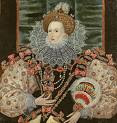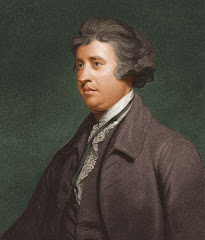Out of the Ashes of Rock
Rock music smashed into public awareness in 1955. The record that started the movement was Rock Around the Clock by Bill Haley and the Comets and used on the soundtrack of the American film “Blackboard Jungle” which was about juvenile delinquents and teenage gangs in a New York school. Where the film was shown or Haley played the cinemas were wrecked and seats slashed with knives. This established the wild, rebellious posture that young people began to imitate and gave them a manufactured identity and rebellion against their families and local traditions.
It was an amalgam of various forms but principally Country and Western and the black form Rhythm and Blues. It came in a package with a style of dress and ways of walking and behaving. Haley was suceeded by Elvis Presley who defined the style and look for the next decade and has a religious devotion 29 years after his death. His home Gracelands attracts worshippers on the scale of Lourdes or Mecca. If any found one of his toenails fans would likely be cured of Scrofula!
The style changed in 1962 with the Beatles. It is an American form that dominated our culture in England. The Beatles appearances produced mass hysteria and in 1964 had an audience of 58, 000 at the Shea stadium in New York, which was unique. Their records sold millions even before release and at one time they had the top 5 hits in the American Billboard chart. John Lennon made his famous remark that “We are more popular than Jesus,” that appalled many but was objectively true.
The talented artists were subsumed into the global enterprise making millions in advertising and book sales and weakened the culture and traditions of independent nations. Rock and its sanitized form pop is mass, universal entertainment.
Most Rock music was produced and listened to through drugs. The type of music went with the type of drug. Some classics are “White Rabbit” by Jefferson Airplane, “I Had Too Much to Dream last night” by The Electric Prunes, and “My Friend Jack eats Sugar Lumps” by the Smoke – all glorified LSD. This caused much psychiatric harm to gullible youngsters and in our own time the varieties of hypnotic dance music require “Ecstasy” which has killed many users.
There was required reading: Timothy Leary, Aldous Huxley, Carlos Casteneda for those who thought they were on a spiritual path; or, for those who wanted political revolution, “The Greening of America” by Charles Reich and the Marxist who inspired the Woodstock festival, and the Hippy movement, Herbert Marcuse. People who did not show full devotion were sneered at as psueds.
Rock stars were promoted as Gurus. The one most feted was John Lennon. But how deep does the thinking go? Lennon was interviewed for Marxist magazine, 'Red Mole' by rich editor Tariq Ali who wrote,” A limo pulled up outside our office, to the astonishment of bystanders. My colleague Robin Blackburn and I piled in and were driven to Tittenhurst, his Surrey mansion. We spoke for most of the day, saw one of Yoko's avant-garde films (which Robin adored) and were driven back to London. The interview had gone extremely well. Both John and Yoko had been disarmingly frank. The very next morning John rang. He had been so inspired by our interview that he had written a new song. Could he sing it down the phone? He could. That was how I first heard "Power to the People".
Tittenhurst Park a massive, white ,200 yr-old Georgian mansion in Ascot, Surrey had an eight-track studio, 7 bedrooms, 3 bathrooms, 3 reception rooms and stood in 70 acres of Parkland. Not only did he record "Working Class Hero" and describe it as a song for the revolution. Here he wrote in his best known song, “Imagine” no possessions” but died leaving $275 million. He donated money to the Ira and Black Panthers.
The groups of the first beat boom looked back but for inspiration not to imitate. The Beatles based their early songs on those of Buddy Holly and used his format for a band of 3 guitarists and drummer. The Rolling Stones were part of a white blues movement in London and adopted instruments such as the maracas from black blues singers in the states and the Sitar from India. These influences aided their own productions and helped developed their own song writing. For the young musicians in the early 60’s the influx of American blues records was inspiration.
A fundamental feature of rock is excitement and the power to put people into frenzy. That is all gone, now. The current artists are looking back to previous bands. There has been a shift from copying the 1960’s groups to the 80’s, but it is still looking back to more exciting and creative times but with no development. Although it was once the young, the main buyers of rock music now are in their 40’s and 50’s. The young have no music of their own and look back to eras before they were born. Rock or pop does not grow out of the natural interactions of the community, or as an expression of some deep care or aspect of life. It is parcelled off into types and eras and the quest of the multi-national corporations for a new sounds, a new look, a new star promoted beyond their talent.
The difficulty has always been matching the words to a tune. Pop is manufactured specially for an audience to make money by titillating them with boy or girl bands with the right look. There is no cultural development and the more popular acts sound indistinguishable. Rock and Pop comes in waves and fashions and because it operates on the surface of life, puts down no roots and parcells people into an era. -“When was your era”, as if all of life comes to an end when a new fad begins!
Young people no longer have an original music of their own and look back to a time before they were born. One 23 yr-old woman tells me her favourite band is the Doors and her hero Jim Morrison. Morrison died 12 years before she was born. This would not be pathetic if she had said her heroes were say Wagner or Beethoven, as they were part of a deep tradition of music which can move people everywhere and by their genius transcend their era.
The image of rebellion is used to corrupt the fans while making millions. A young woman told me she likes the Sex Pistols and the Clash, “They are anti-establishment”. What! Most pretend to be, but have made millions and live in mansions with countless bank accounts. Looking at the Charts is like looking at the stock exchange index and buying a CD like shopping for processed food in a supermarket. Everything is packaged, the images on the front are designed to appeal to usually base instincts. There is neither spontaneous talent nor inspiration. Mass produced Rock and Pop is dying, its energy gone, or, as T.S.Eliot put it in “The Hollow Men”, fading away, “Not with a bang, But a wimper. What will fill this gap?
The time is right to begin replacing this artificial music by re- linking to our own traditions and re-developing them for our current time and experiences. We can not go back into the past and must use the instruments that modern musicians have done so much with. Many would prefer a guitar solo from Clapton, Jimmi Hendrix or Gary Moore than an Aria from an opera. It is also futile to pick up the old instruments and try to make authentic music a thousand years late - we would be a choir of caterwaulers screeching on catgut.
I mentioned Blues music. This is a genuine culture and grows out of the real experiences of poor, black singers who tramped the southern states articulating a deep need and a plaint for improvement. This is an immediate expression of the sufferings of a community grown out of experience not manufactured.
Our natural culture is being destroyed and we re-culturalised for the global culture. We should seek to introduce an understanding of our spiritual and social malaise into traditional forms. We are being oppressed by our elected representatives who have hoodwinked us into trusting them as looking after our interests is a subject for community songs. There is precedent in our Ballads of Robin Hood.
The early songs of Bob Dylan give an idea of how to articulate our modern oppressions. He wrote protest songs with a contemporary theme within traditional structures. His anthem for the new era “The Times They are A Changing” was expressed musically by using the tune of “An Irish Rover”.
“Come mothers and fathers
Throughout the land
And don't criticize
What you can't understand
Your sons and your daughters
Are beyond your command
Your old road is Rapidly agein”
This was a hymn to the Adversary culture but it suggests the way. A Hard Rains A-Gonna fall” contains imaginative poetic imagery. With Dylan the whole is greater than the parts and the images are built up until one has the feel of mans’ destructive potential.
It is developed from our traditional Border Ballad, Lord Randall:
"O where ha you been, Lord Randal, my son?
And where ha you been, my handsome young man?"
"I ha been at the greenwood; mother, make my bed soon,
For I'm wearied wi hunting, and fain wad lie down."
In Dylan,
“Oh, were have you been, my blue-eyed son?
Oh, were have you been my darling young one?
I’ve stumbled on the side of twelve misty mountains,
I’ve walked and I’ve crawled on six crooked highways,
I’ve stepped in the middle of seven sad forests
I’ve been out in front of a dozen dead oceans,
And it’s a hard, it’s a hard, etc…
In the original Lord Randall has been poisoned by his lover, in Dylan the world has been poisoned by humanity. It was the time of the Cuban missile crisis and Dylan uses traditional forms to carry the contemporary thoughts and emotions felt by people across the world. The Dylan piece is more sophisticated than its model and the language poetic but it suggests a way of re-linking with our musical origins and but being topical for our current time.
TV and radio no longer have such powerful control over what we watch and hear as the internet has opened up new ways of broadcasting music. There are local shows and festivals to begin a renewal of musical culture, like the return of spring after the cold and blasts of winter. There are local and back street pubs that need custom and many who want to escape trendy bars with their excessively loud dance music which destroys customers’ ears.
Development is in the practice, not rationally planned beforehand. Natural music grows out of the community whereas artificial pop and rock are manufactured and “consumers” manipulated into buying it. Development within a tradition gives continuity and acts as a spine to hold communities together. Now that rock is dead, and pop puerile it is time to begin re-linking with our cultural origins.
Saturday, 15 November 2008
Subscribe to:
Comments (Atom)










